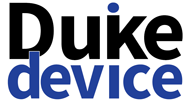Early Stage
Project Management (EB001)
DukeDevice advocates the use of formal Project planning and scheduling tools for every purposeful product effort. In saying this, we recognize modern product efforts have the solution attributes of multiple, complex combinations of technology. Modern product teams include roles in each of the product-enabling technologies, in business & finance, marketing & sales and in operations. Each team member brings their own purpose, along with the technology, tools, and jargon associated with their specialized disciplines and roles. See Figure 1, “Limits of Cognition”. (Mythical Manmonth, ). A product-project team may appear a tower of Babel with a common product purpose. Cognition limiting becomes a barrier to realizing team and product excellence. In a purposeful product effort, team leaders encounter the limits of cognition as they push to the edge of sustainable support, ie, maxing out the available resources towards the product purpose.
Project planning is first a tool to bridge the limits of cognition. A first resource needed to bridge these limits is a team leader with balanced and high level skills in dealing with human, technology and business. (This is merely the first 2 of 3 (3 rules) ). To be effective, the team’s planning/scheduling tool must enable rapid model creation and revision with frequent team review and update. Excellence isn’t driven by tool, the key team members, especially the team leader are the drivers. Project planning allows insight into the interaction of resources, a key for the team leaders grasp of the effort and how it is and will perform to the purpose. The plans and schedules must be respected and supported by the team is accessible and the process technology the resources and tools for Project planning and scheduling.
Microsoft Project is the DukeDevice-preferred platform especially for early stage, small teams. PRODUCT INSIDE will follow with scaling-to-enterprise tools, such as PLM software, in future issues.
Staying with the small team focus, let’s address the typical push-backs to any Project planning tool but using MS Project as the specific example: 1.) Installation cost is too high, 2.) the complexity/learning curve is too high and 3.) there’s a lack of perceived fruitful outcomes.
1.) MS Project is very affordable for single users and small teams. Single-user MS Project 2010 version downloads can be found well-under $200. Installation and set-up takes only a few minutes. MS Project 2013 and 2016 downloads can be found for less than $300 and $400 respectively. DukeDevice uses the 2010 version and we haven’t found any reason to pursue an upgrade – the 2010 features are more than sufficient for any small-team power-user. As an upfront cost – the ½ hour or so in installation and set-up time, and less than $200 purchase price is hardly a cost barrier even for the most frugal venture.
2.) The best answer here is relative to other platforms and a fair, objective analysis across the platforms and with several users. We’ll continue to focus on MS Project while presenting other planning and PLM resources and tools. See DukeDevice Project Planning Tutorial for focused take on complexity and learning curve.
3.) The takeaways from the DukeDevice Project Planning Tutorial are:
- Preparation of a draft comprehensive project plan for a small team (average of 5 contributors) will take 5 – 10 days and about 50 expensed hours.
- Outcomes are enhanced 3 to 5 fold in most projects. This is a fundamental of any Product Professional who has been responsible for project teams and outcomes. “Tasks take 3 – 5 times longer than the first estimates the investment returns.”
